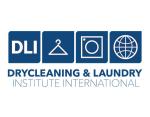CHICAGO — It’s easy to take a relationship, either personal or business, for granted when everything is going well, but there are dangers in this neglect. If something unexpected happens, the strength of the bonds between dry cleaners and their suppliers can mean the difference between failure and success.
In Part 1 of this series, we explored the differences in simple transactional relationships and deeper rapport with suppliers. In Part 2, we looked at some of the lessons the pandemic taught, as well as red flags to look for when judging the health of the relationships between cleaners and suppliers. Today, we’ll conclude by examining the value of open communication and ways to build a relationship that will stand the test of time.
Two-Way Communication
Communication is the lifeblood of any relationship, and that includes the relationship between dry cleaners and their suppliers. This requires asking the right questions and listening to the responses.
To feel valued as a partner, says Monika Manter, owner of Balfurd Dry Cleaning, located in State College, Pennsylvania, “it’s knowing that your rep has your best interests in mind. They’re not blindly pushing their products and services before they fully understand your business and what your pain points are. We want someone to listen to our issues and find solutions to our issues, not simply push products onto us.”
“I want it to be a two-way street,” agrees Carlyn Parker, director of operations at Dependable Cleaners, based in the greater Boston area. “I want (my vendor representatives) to be helpful to me. When they see a store is ordering more supplies than usual, I want them to notice that and tell me.”
“The experts know that it’s more important that you listen rather than you speak,” says Fred Schwarzmann, CEO of A.L. Wilson Chemical Co. “I think that is certainly a key when you’re trying to develop a new relationship with a customer. You’ve got to find out where this person is and where they stand. Do they understand what their competitors are doing? Do they understand how to put out a good garment? Are they a businessperson, or are they just a tradesman?”
Manter feels that this “getting to know you” phase is crucial in building a partnership.
“It’s important for either a new cleaner or a new rep to have an onboarding experience,” she says. “When it’s a new relationship, the rep needs to check-in with the cleaner more frequently, either in person or by calling. They need to be reasonably accessible and call you back.”
These communication efforts are the foundation for future success.
“It’s not rocket science,” Manter says. “It’s treating people how you want to be treated in that situation. It’s taking time to be in-house and train a cleaner on the best way to use a product or troubleshoot a service. It’s asking for feedback after the onboarding to see what could have been better.”
Schwarzmann believes this process is crucial to both forging long-term bonds and strengthening them over the years.
“You really need to go in and investigate before you try to counsel the dry cleaner,” he says. “If we’re all consultants, how are you going to consult with somebody until you figure out what they already know? You can’t, and you’re going to look foolish trying to do so. So, I think the first thing to do is to go in and figure out where they’re coming from, where they are, and where they want to go.”
Parker says that, while local suppliers should get a tour of their clients’ businesses to get a better feel for their needs, it’s still important to keep the lines of communication open with out-of-area representatives.
“Through emails or on the phone, let them know your goals,” she says. “Let them know who you are and what you’re going to be doing.”
Also, Parker has found it’s getting easier to meet with these suppliers now that shows are underway again.
“During events like The Clean Show or regional exhibitions, you can often meet them face-to-face,” she says. “Even though we talk to them between events, we always search out our vendors to say hi and to build that relationship.”
Industry groups also provide excellent ways to connect with customers and understand their needs, suggests Schwarzmann.
“Trade associations like the National Cleaners Association (NCA) or the Drycleaning & Laundry Institute (DLI) really give manufacturers an opportunity to engage with their customers in a deeper way than the transactional way of coming into your store every two weeks and seeing if you need another box of struts,” he says.
Schwarzmann believes that both those who are new to the drycleaning industry and those who are experienced should take advantage of the opportunities available to them.
“I would absolutely encourage them to consider going to a meeting of the local drycleaners’ association — it’s the gateway into the community,” he says. “There are also trade shows where you can connect, and for that matter, read the trade journals. It’s this communication and education that ties us all together.”
Everyone’s Responsibility
To fully realize a true partnership, it takes work on both ends. While the reps can call on their drycleaning clients, those cleaners also need to make the effort to communicate their needs.
“If you want to have that good relationship, communication has to go both ways,” Parker says. “Each of the vendors has to be doing it, and we have to be doing it as dry cleaners. If you can build that relationship, you can have more success.”
And, Schwarzmann says, this should be an ongoing effort, and not something to be undertaken only during emergencies.
“Everybody can get complacent when things are going well,” he says. “You do have to stay engaged, ultimately, because if you’re not engaged — if you’re not on that listening tour — you can miss out on opportunities to continue to help your customers.”
For Part 1 of this series, click HERE. For Part 2, click HERE.
Have a question or comment? E-mail our editor Dave Davis at [email protected].











